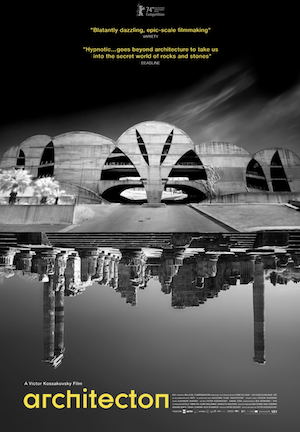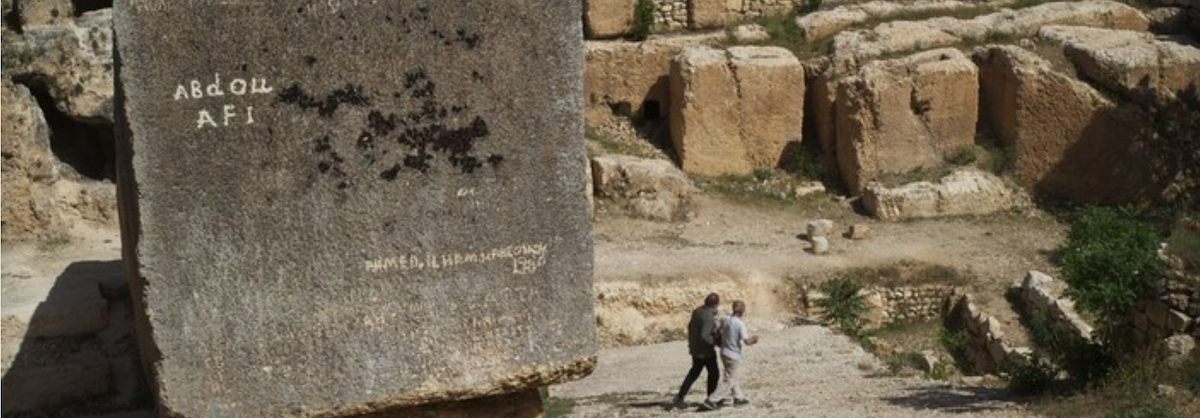The scene is relentless, moving over a vast area of destroyed buildings, forming a backdrop to the initial film credits.
The opening of the 98-minute documentary Architecton by Russian filmmaker Viktor Kossakovsky shows drone-produced images of what I expect is war-torn Ukraine. Concrete housing blocks are bombed apart to show the interior remnants of the lives once lived there.
 From those images, the scene moves to a site of historic ruins with immense stone constructions. The camera hovers over one large piece being reverently touched by an old man. He is soon transported to an Italian villa, where he is directing two laborers to place small stones in a circular pattern, forming a garden some 25 feet in diameter.
From those images, the scene moves to a site of historic ruins with immense stone constructions. The camera hovers over one large piece being reverently touched by an old man. He is soon transported to an Italian villa, where he is directing two laborers to place small stones in a circular pattern, forming a garden some 25 feet in diameter.
Moving quickly, the film views a stone mountain quarry where the land is blasted apart to form terraced roads for trucking stone to factories, where the quarried materials are broken to gravel size for use in making concrete.
From the scenes of quarrying, Kossakovsky moves to landfill sites where demolished concrete and steel housing parts are pushed around by large bulldozers.
This mélange is presented with little dialogue, but with a cacophony of sounds produced by horn, drum, and string instruments mixed with footsteps, wind, and human sighs. Shot in both color and silvery black and white, the film is beautiful to watch, although confusing.
Scenes and sounds of blasted, crashing, tumbling stone hills, beautifully forested landscapes, and destroyed housing blocks are mixed with historic sites of monolithic stone stairs, columns, walls, arches, and small balancing sculptures.
The majority of the dialogue occurs at the film’s end, where the Italian architect and designer Michele De Lucchi laments the character of contemporary design and wonders what might be better. A brief scene of a futuristic concrete building might be his suggestion, but like the overall take of this documentary, the meaning is unclear.
The film is worth seeing, but only for its visuals—many of which are stunning—and the supporting sounds that are mysterious and unusually mixed.”
Is Kossakovsky lamenting the destruction of Ukrainian villages? Is he presenting the pulling apart of natural settings? Is he contrasting ancient stone ruins with the messy demolition and stockpiling of concrete waste? Is he in favor of one man’s small gesture of making a stone pattern in the ground rather than building massive concrete constructions?
Likely all of the above, but the film carries an excess of images: too many opposing scenes in an awkward order. None of the filmed locations are identified. Only the old man is named as De Lucchi.
As an architect, I pieced some of the film’s connections together, but I wonder if the other few in the audience were able to do so.
For me, the film is worth seeing, but only for its visuals—many of which are stunning—and the supporting sounds that are mysterious and unusually mixed. Perhaps more skillful editing, site identifications, and fewer less alarming images might have clarified the director’s intent.
Editor’s Note: Architecton is now playing at The SLO Film Center at the Palm Theatre.
